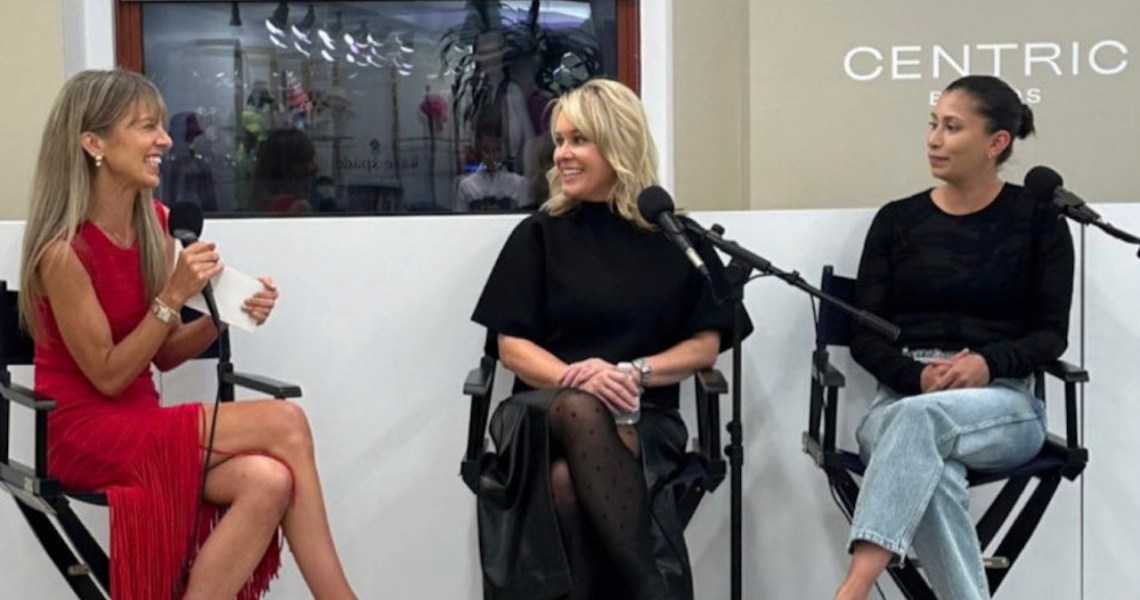On Wednesday, along with Hervé Léger, Glossy hosted the latest Glossy+ member-exclusive Executive Roundtable event, at Hervé Léger’s showroom in NYC’s Empire State Building. Attendees included dozens of executives from fashion brands, retailers and agencies, who participated in a lively discussion about the challenges facing the industries and the strategies they’re using to navigate them.
Here are three of the biggest challenges attendees brought up and what they said about each.
Combatting returns
As brought up by Executive Roundtable attendees, brands have been struggling with rising product return rates. As a result, some have started charging restocking fees for those items.
“What we’ve seen with returns — not only online, but also in-store — are the issues with some retailers now having a lot of different policies,” said Rochelle, who leads a 38-year-old ready-to-wear company stocked at Macy’s and JCPenney. “Even for Bergdorf Goodman and Neiman, you must return the item within 30 days, or 21 days, and even then they charge you a restocking fee. … Even in-store, they’re [often] charging $9.95 to restock. It’s an industry problem”
Some retailers are offering creative, mutually beneficial ways for customers to avoid fees. “If you have a credit card at Macy’s, you won’t get the restocking fee,” said Rochelle.”
A large driver of fashion returns is sizing issues. Attendees called out that the new technologies working to solve this problem, like 3D item modeling, are often cost-prohibitive. So instead, they said, their brands are attempting to improve the problem by adding more detailed imagery to their websites. “Part of the issue is education,” said Rochelle. “We need to say how this fits and what the true measurements are, and really give the customer more of a 3D image and more [advanced] technology so she can see what it looks like.”
Melissa Lefere-Cobb, division head of Hervé Léger at parent company Centric Brands, spoke about new ways the company is presenting information about sizing, especially because HL’s stretch is unique to the brand. Hervé Léger is trialing the inclusion of a “stretch-o-meter” on its product pages, to communicate the fit of its new knits that may fit differently than the classic bandage.
In addition, Hervé Léger is communicating with its store managers about the feedback they’re getting from customers. And it’s leveraging Rent the Runway customer reviews of its pieces.
“We have a big business with Rent the Runway, and I read every single review,” said Michelle Ochs, creative director of Hervé Léger. “A lot of the comments when we were introducing the new yarn techniques were that it doesn’t hold like the Hervé bandage.”
Leveraging UGC content
The conversation shifted to the ways that brands are using influencers and UGC content to build trust and grow customer acquisition. Hervé Léger brought more size inclusivity to its newest range. As such, it’s been working with influencers with a variety of body types to shift the outdated perception that the brand doesn’t work for anyone beyond a size 2.
“We have some great influencer partnerships,” said Lefere-Cobb. “Rocky Barnes wore us when we first relaunched, and she’s been a great supporter. Content is king, and having that user-generated content helps. If an influencer has the ability to vouch for Hervé Léger and say, ‘I trust this,’ you will see that trickle to her followers, and then they can create that user-generated content.”
Ultimately, though, attendees agreed that staying relevant with customers is about consistently making good products, which can drive long-term loyalty through UGC, as well.
“[It’s great] when you know that if you get something from a brand, it’s your size — you know what you’re going to get,” said an attendee. “We’re all chasing trends, but building that rapport with your customer is key. You can get that flash-in-the-pan bump from an influencer or a boost from a post that took off. But you’re building a business. And, at the end of the day, business needs a good product.”
And like creator partners, brand partners can work wonders to fuel awareness. “The best collabs are typically when a brand has a really strong identity. Other companies can hop onto it because it’s a really good canvas,” said Lefere-Cobb. “The bandage dress is such a classic item, other brands can paint on it.”
Marketing through Pinterest, Shorts and Reddit
During the discussion, attendees agreed that Instagram and Facebook marketing are expensive, while other platforms like Shorts and Pinterest are allowing for better customer segmentation.
“There’s a lot of interesting stuff happening on Pinterest where people are looking for inspiration,” said a brand representative from a luxury fragrance brand. “And Reddit is a really big platform that we’re seeing some beauty brands jumping on, because a lot of conversations are happening there. … You’re able to capture a different customer. Somebody who’s coming from TikTok is mostly a Gen-Z customer. But somebody on Pinterest could be anyone, because it’s somebody who is visually driven to inspiration. Somebody on YouTube is consuming that long-form content. So you really are able to capture different target groups and different age groups.”




